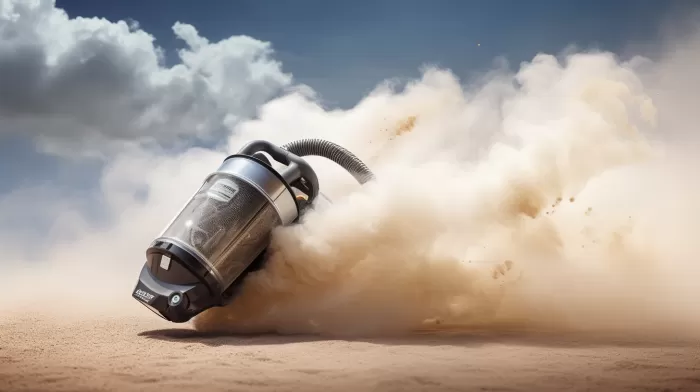Imagine this: you’re vacuuming your house, thinking you’re making the air inside cleaner and safer for your family. But did you know that the dust thrown off by your vacuum cleaner actually contains harmful bacteria and mold that could be harmful to your health, especially for allergic people, infants, and those with compromised immunity?
In this article, we’ll explore the dangers of vacuum cleaner dust, its potential effects on your health, and how to minimize these risks for a cleaner, healthier home.
Vacuum cleaner dust: A hidden health hazard
A study conducted by the University of Queensland and Laval University in Quebec found that vacuum cleaner dust is filled with bacteria and mold. The examination of this dust revealed antibiotic-resistant microbes with the potential of causing serious illness.
According to the researchers, the dust found indoors may act as a vehicle for infant botulism infection, which could have severe consequences. These consequences include sudden infant death syndrome, as evidenced by several studies.
The Canadian scientists explain that although no quantitative data is available for antibiotic resistance gene emission while vacuuming, the observed emission rates for bacteria indicate that the genetic content of those bacterial cells and their antibiotic resistance genes may contribute to indoor bioaerosol exposure.
Many of the bacteria spewed into the air by vacuum cleaners originate in human skin and hair that accumulate on indoor surfaces. By simply vacuuming your home, you might unintentionally be spreading these harmful particles into the air.
The health implications of vacuum cleaner dust
The bacteria and mold found in vacuum cleaner dust can have negative effects on your health, particularly if you or any family members are allergic, have a weak immune system, or are still very young.
Here’s a list of possible health problems related to vacuum cleaner dust:
- Allergic reactions: The allergens in dust can provoke hay fever-like symptoms such as sneezing, a runny nose, and itching in people who are susceptible to allergies.
- Asthma: Dust particles can trigger asthma symptoms like wheezing and shortness of breath in those who have the condition.
-
Infections: As previously mentioned, vacuum cleaner dust contains antibiotic-resistant bacteria and mold that could lead to infections. In some cases, these infections could have severe consequences like sudden infant death syndrome.
-
Compromised immune system: The bacteria and mold in vacuum cleaner dust may further weaken the immune system of individuals who already have compromised immunity due to illness or medical treatment.
How to minimize the risks of vacuum cleaner dust
Now that you know the potential health hazards of vacuum cleaner dust, it’s important to take steps to minimize these risks. Below are some tips for a cleaner, healthier home:
- Open your windows: Ventilation is important when vacuuming. Open your windows or doors while vacuuming to allow the potentially harmful particles in the dust to escape. This practice can help prevent indoor air pollution.
-
Choose the right vacuum: Opt for a vacuum cleaner with a HEPA (high-efficiency particulate air) filter to trap dust particles effectively. HEPA filters can capture at least 99.97% of particles as small as 0.3 microns, effectively reducing the bacteria and mold in the dust that’s recirculated into your home environment.
-
Clean your vacuum regularly: Empty the dust container and clean the filters after every use to minimize the spread of bacteria and mold. Follow the manufacturer’s guidelines for filter replacement to maintain optimal performance.
-
Vacuum frequently: Regular vacuuming can help control the spread of allergens and bacteria in your home. Concentrate on high-traffic areas where dust and allergens are most likely to accumulate.
-
Take additional precautions: If you or anyone in your family is particularly sensitive to dust, consider wearing a dust mask while vacuuming. Additionally, refrain from vacuuming when such individuals are in the room to minimize their direct exposure to the aerosolized particles.
By taking these steps to minimize the risks associated with vacuum cleaner dust, you can help ensure a cleaner and healthier environment for you and your family. Remember, a clean home is a healthy home.



